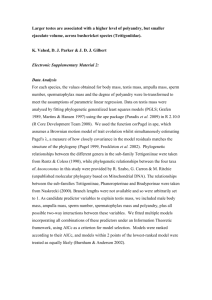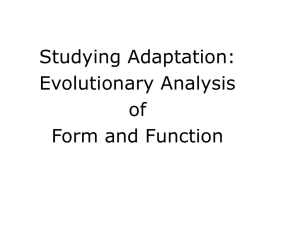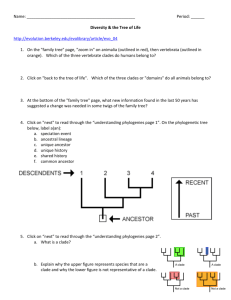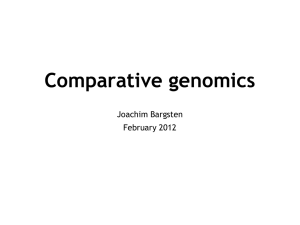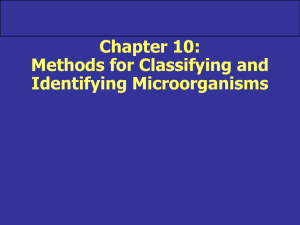Nescent
advertisement
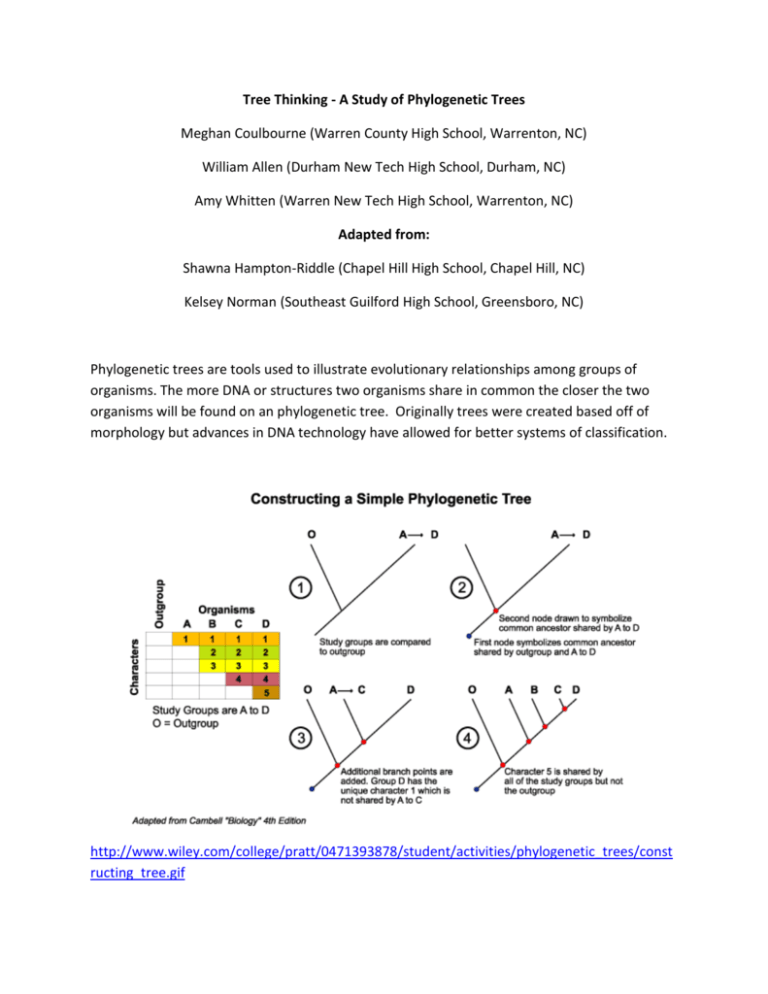
Tree Thinking - A Study of Phylogenetic Trees Meghan Coulbourne (Warren County High School, Warrenton, NC) William Allen (Durham New Tech High School, Durham, NC) Amy Whitten (Warren New Tech High School, Warrenton, NC) Adapted from: Shawna Hampton-Riddle (Chapel Hill High School, Chapel Hill, NC) Kelsey Norman (Southeast Guilford High School, Greensboro, NC) Phylogenetic trees are tools used to illustrate evolutionary relationships among groups of organisms. The more DNA or structures two organisms share in common the closer the two organisms will be found on an phylogenetic tree. Originally trees were created based off of morphology but advances in DNA technology have allowed for better systems of classification. http://www.wiley.com/college/pratt/0471393878/student/activities/phylogenetic_trees/const ructing_tree.gif 1. List at least 3 locations where you have found phylogenetic trees in the museum. Move to Unravelling DNA exhibit and read "Unravelling DNA" and "DNA and the Tree of Life." 2. Complete the light array activity-"How similar are we?" Then record the percent similarities in the space beow. Based on % shared genes, construct a phylogenetic tree comparing the five organisms to humans. 3. Why use DNA to construct a phylogenetic tree as opposed to just using morphology? Let's look at the T. rex phylogenetic tree on the 3rd floor of the NRC. 4. What evidence confirms that birds related to dinosaurs? 3. Which type of dinosaur has the most closely related common ancestor to birds? 4. How many nodes separate ornithischians from birds? What does that tell us about the relationship between birds and ornithischians? 5. If we flipped Theropods and Birds on the phylogenetic tree, would that change the relationship between birds and ornithischians? Move to ice age giants exhibit and locate the other phylogenetic tree. 6. What technique are scientists using to create this phylogenetic tree? What molecular techniques have you covered in class that relate to comparing DNA? 7. Which organism in the elephant family has the most DNA in common with the Asian Elephant? Least DNA in common? 8. Notice the African Elephant and the Asian Elephant images in the phylogenetic tree are at different levels then the Mastodon and Mammoth. Why do think this might be illustrated this way in a phylogenetic tree? Extension for AP Biology: Go to the 3rd floor of the Natural Science Museum (Main Building). Analyze the Dinosaur Diversity exhibit. 1.What group are birds most closely related to? 2. What key morphological differences exist between Saurischians and Ornithischians? 3.How would this tree diverge if it was based off of morphology instead of DNA evidence? Read the exhibit , “Is Our Friend a Tiny Dinosaur?” Where would you place Archaeopteryx and Caudipteryx on the tree to the left? Justify your answer. Extension for Biology: Go to the 4th floor of the Natural Science Museum (Main Building). Just outside the Arthropod Zoo analyze the “The Little Things that Rule the World” exhibit. Choose 5 organisms (take photos). Write a short biography for each (describe the phenotypic traits around one sentence each) Create a phylogenetic tree of your chosen five organism tree and justify it with the phenotypic traits. Answer Key 1. Main Building- T. rex skull and insect exhibit, NRC-T. Rex and Elephant family 2. The proteins in T. rex are closest to modern day birds. 3. Theropods 4. 3, more distantly related to birds 5. No, same number of nodes separating the two. 6. DNA molecular analysis 7. African Elephant/ Mastodon 8. Mastodon and mammoths are extinct and do not exist in modern times. 9. DNA provides more reliable evidence 10. Variable tree design. Order from furthest from human to closest: E. coli 9%, round worm 11%, fruit fly 36%, zebra fish 85%, chimpanzee 96%. AP Biology Extension Answer Key: 1. Deinonychus 2. Walking on two vs 4 legs, short vs long limbs, lizard hipped vs. bird hpped 3. Pachycephalosaurus + thescelousaurus should be moved to the right branch. (Saurischians) Diplodocus should be moved to the left branch (Ornithischians) 4. Open ended. Please read justification. Biology Common Core Standards Bio.3.4.1, Bio.3.5.2 Next Generation Science Standards High School Life Science H.S. –LS4-1, H.S.-LS3-A, H.S.-LS3-B, High School Earth Science H.S.-ESS1-C Middle School Life Science MS.-LS3-A, MS-LS3-B, MS-LS4-A, Middle School Earth Science MS-ESS1-C AP Biology Standards Big Idea 1

